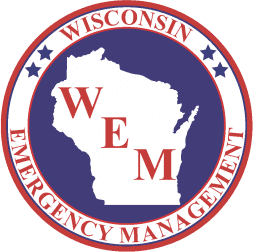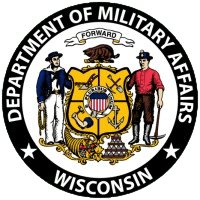Wisconsin’s hazardous materials (hazmat) courses are comprehensive and exceed national training standards in the field of hazmat response training. Standards for the Hazmat training program are found both in the Federal Code CFR 29 and the National Fire Protection Association Standard #472. As of October of 2014 all classes will be based on the NFPA 472 and tied directly to Job Performance Requirements (JPRs). JPRs are vital to the successful qualifying of an individual to a particular Professional Qualifications project standard. JPRs must be specific to indicate the attributes of successful performance on the job.
Core courses include training in First Responder Awareness, First Responder Operations, Hazmat Technician, Specialist, Incident Commander, Hospital Medical Response Training, Safety Officer, WMD and Terrorism. Specialized courses include, Rail Car Safety, WI Sampling Class, Radiation for First Responders, and Mass Decontamination.
The Wisconsin Emergency Management training program offers and extensive array of training opportunities for emergency managers, law enforcement, fire, EMS, public health, local officials, and volunteer organizations.
Description of HMEP Grants
The Hazardous Materials Emergency Planning Grant (HMEP is funded by the U.S. Department of Transportation (USDOT) and administered by the State of Wisconsin. The purpose of this grant program is to increase county, tribal, and local effectiveness in safely and efficiently handling hazardous materials accidents and incidents, enhance implementation of the Emergency Planning and Community Right-to-Know Act (EPCRA), and encourage a comprehensive approach to emergency planning, training and exercising by incorporating the unique challenges of responses to transportation situations. The focus of the grant is on the commercial transportation of hazardous materials.
WEM will provide grant funds for county, tribal, and local government for planning, training and exercise activities that are aimed at increasing their jurisdictions’ effectiveness in safely and efficiently handling accidents and incidents related to the commercial transportation of hazardous materials within and through their jurisdictions. These activities may include conducting commodity flow studies; tabletop, functional or full-scale exercise, and numerous hazmat training opportunities for first responders.
Please contact the HMEP Program Manager at WEM for additional information.
Hazardous Materials Response
To provide a high level of hazardous materials response capabilities to local communities, Wisconsin Emergency Management contracts and manages twenty-two Regional Hazardous Materials Response Teams. The teams are divided into Task Forces: Northeast Task Force, Northwest Task Force, Southeast Task Force, and the Southwest Task Force. These Task Forces are then divided into Type I, Type II, and Type III teams, all with complimentary capabilities and training requirements.
The Wisconsin Hazardous Materials Response System may be activated for an incident involving a hazardous materials spill, leak, explosion, injury or the potential of immediate threat to life, the environment, or property. The Wisconsin Hazardous Materials Response system responds to the most serious of spills and releases requiring the highest level of skin and respiratory protective gear. This includes all chemical, biological, or radiological emergencies.
Local (County) Hazardous Materials Response Teams respond to chemical incidents which require a lower level of protective gear but still exceed the capabilities of standard fire departments. Forty counties currently have level 4 Hazardous Materials Response Teams. Those teams may provide assistance to surrounding counties and are approved by the Local Emergency Planning Committees.

